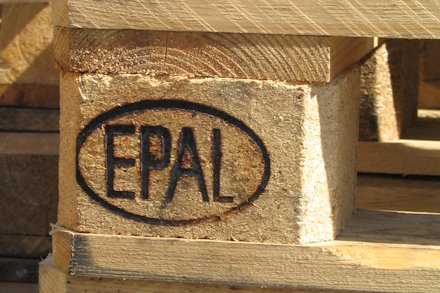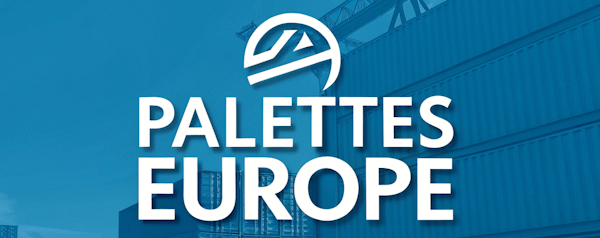
What are the dimensions of an EPAL pallet?
The standard EPAL pallet (EUR-1) measures 1200 × 800 × 144 mm.
How heavy is an EPAL pallet?
The average weight is between 22 and 25 kg.
What is the load capacity of an EPAL pallet?
- Dynamic load (in motion): up to 1,500 kg
- Static load (on the ground): up to 4,000 kg
Are EPAL pallets systematically ISPM 15 treated?
Yes. All EPAL pallets are heat treated (HT) in accordance with ISPM 15, which is mandatory for export.
What types of certification exist for pallet manufacturers?
- EPAL certification
- ISPM 15 certification
- UIC certification (International Union of Railways)
- ISO 9001 certification (quality management)
Are there several EPAL pallet formats?
- EUR 1: 1200 × 800 mm
- EUR 2: 1200 × 1000 mm
- EUR 3: 1000 × 1200 mm
- EUR 6: 800 × 600 mm
Who issues EPAL certifications to manufacturers?
The national EPAL committees, under the aegis of the European Pallet Association (EPAL e.V.), in conjunction with independent inspection bodies.
Is there a global equivalent of the EPAL standard?
No. EPAL is a European standard, recognised internationally, but there is no single global standard.
Is an SNCF pallet equivalent to an EPAL pallet?
Yes. The so-called ‘SNCF’ pallet meets the EUR / EPAL standards, as the SNCF is a member of the UIC, which codified these standards.
Can a damaged EPAL pallet be repaired?
Yes, only by an EPAL-approved repairer. A specific repair nail must be affixed.
How many times can an EPAL pallet be reused?
An EPAL pallet can be reused up to 10-15 times, or even more, if it is properly maintained and repaired.
Is an EPAL pallet recyclable?
Yes. The wood can be recycled or recovered, and the nails recovered. Reuse and repair are encouraged before recycling.
How do I check whether a supplier is EPAL approved?
The list is available at www.epal-pallets.org.
Can EPAL pallets be exported?
Yes. Thanks to ISPM 15 treatment, they are accepted in international trade.
What level of moisture in a pallet is accepted by the EPAL standard?
The wood in EPAL pallets must not exceed 22% moisture content at the time of manufacture.
What is the difference between an EUR pallet and an EPAL pallet?
Both follow the same standard, but EPAL is now the official body that manages licensing and inspections. Pallets marked “EUR” are older or fall under UIC supervision.
How long is an EPAL license valid?
The EPAL license is valid for one year and is renewable after an annual inspection by an authorized control body.
Can an EPAL pallet be painted?
No. Painting or varnishing an EPAL pallet is prohibited, as it may obscure markings or compromise transport safety.
Can EPAL pallets be used in the food industry?
Yes, provided they are clean and treated according to ISPM 15. However, plastic pallets are often preferred in direct food contact areas.
Are EPAL pallets compatible with automated systems?
Yes. Their standardized dimensions and construction make them fully compatible with conveyors, forklifts, and automated racking systems.
What is the difference between a one-way pallet and an EPAL pallet?
A one-way pallet is designed for single use. EPAL pallets are returnable, reusable, repairable, and subject to strict quality controls.
What should I do with a broken or unusable EPAL pallet?
It should be sent to an EPAL-authorized repairer. Otherwise, it can be recycled as biomass or in the wood industry.
[ Back ]
